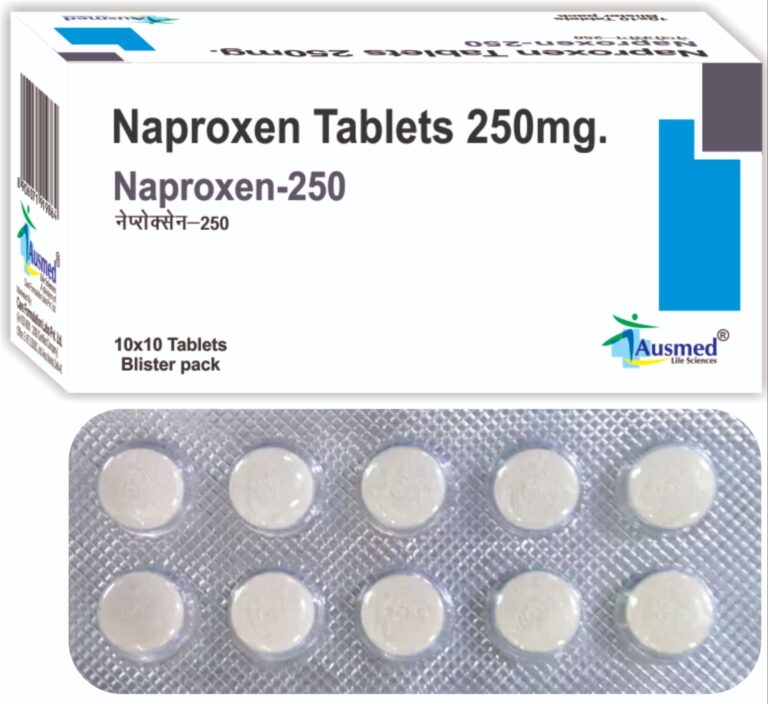How Do I Manage Gas in My Breastfed Baby?

Welcoming a new baby into your life is an exhilarating experience, but it also comes with a host of new challenges, including managing gas in your breastfed little one. Gas can be a common and uncomfortable issue for many infants, causing fussiness, restlessness, and even discomfort. As a concerned parent, it’s natural to seek effective ways to alleviate your baby’s gas and provide them with the comfort they deserve.

In this comprehensive guide, we will explore the causes and symptoms of gas in breastfed babies, as well as practical strategies to help ease their discomfort. From understanding the importance of proper latch during breastfeeding to learning about homemade remedies and safe infant gas drops, we will cover everything you need to know to promote your baby’s well-being.
What are the causes of Gassy baby?
There are several reasons why breastfed babies may experience gas:
- Swallowing air during feeding: Babies can swallow air while breastfeeding, especially if they are not properly latched onto the breast or if the milk flow is too fast.
- Immature digestive system: A newborn’s digestive system is still developing, and it may take some time for it to fully mature, leading to gas build-up.
- Sensitivity to certain foods: Some babies may be sensitive to specific foods consumed by the breastfeeding mother, which can cause gas in the baby.
- Overfeeding: Feeding a baby too much or too quickly can lead to excessive gas.
Gassy baby signs and symptoms
Identifying gas in a breastfed baby can be crucial for providing relief. Common signs of gas in infants include:
- Fussiness and crying, especially during or after feeding.
- Pulling their legs towards their tummy or arching their back in discomfort.
- Burping or passing gas frequently.
- Difficulty in settling down for sleep.
- Bloated abdomen.
What are the treatments for breastfed baby gas?
The treatments for breastfed baby gas focus on alleviating discomfort and reducing the likelihood of gas buildup. Here are some effective strategies:
- Correct breastfeeding latch: Ensure that the baby is latched onto the breast properly, as a shallow latch can lead to increased air swallowing.
- Experiment with breastfeeding positions: Try different positions like the football hold or laid-back position to minimize air ingestion during feeding.
- Burping during and after feedings: Gently burp the baby during and after each feeding to release trapped air.
- Pace feeding: Encourage slower feeding by allowing the baby to control the flow of milk, reducing the intake of air.
- Elimination diet for breastfeeding mothers: If the baby seems sensitive to certain foods, the mother can try eliminating potential trigger foods from her diet.
- Tummy massage: Gently massage the baby’s tummy in a clockwise direction to help relieve gas and promote bowel movement.
- Bicycle legs: Hold the baby’s legs and gently move them in a bicycle motion to aid in moving gas along the digestive tract.
- Warm compress: Applying a warm (not hot) compress to the baby’s tummy can provide comfort and relief.
- Consider simethicone drops: Over-the-counter simethicone drops may help break down gas bubbles in the baby’s stomach.
Remember that a combination of these strategies may be necessary to address gas in breastfed babies effectively. If the baby’s gas continues to cause significant discomfort or if you have any concerns, consult with a pediatrician for personalized advice and proper evaluation.
What are the best homemade remedies for baby gas relief?
Here are some natural remedies that may help relieve gas in breastfed babies:
- Tummy massage: Gently massaging the baby’s tummy in a clockwise direction can help release trapped gas.
- Bicycle legs: Holding the baby’s legs and gently moving them in a bicycle motion can aid in moving gas along the digestive tract.
- Warm compress: Placing a warm (not hot) compress on the baby’s tummy can provide relief.
- Simethicone drops: Over-the-counter simethicone drops may help break down gas bubbles in the baby’s stomach.
What can I do to help my baby with gas?
To help your baby with gas, there are several simple and effective strategies you can employ. First and foremost, ensure a proper latch during breastfeeding to minimize air swallowing. Experiment with different breastfeeding positions, such as the football hold or laid-back position, to reduce the risk of air ingestion. Taking feeding breaks to gently burp your baby during and after each meal can release trapped air and alleviate gas discomfort.
Additionally, consider pace feeding to encourage slower feeding and allow your baby to control the flow of milk, which can minimize air intake. In addition to the remedies mentioned above, parents can try the following tips to alleviate gas in their breastfed baby:
- Ensure a proper latch during breastfeeding to minimize air swallowing.
- Keep the baby upright for at least 20-30 minutes after feeding to help with digestion.
- Use a slow-flow nipple if using a bottle for feeding.
- Consider using pacifiers during naps and bedtime, as sucking can soothe and comfort the baby.
Can breastfeeding make babies gassy?
Yes, breastfeeding can sometimes make babies gassy. When a baby breastfeeds, they can swallow air along with the milk, especially if they are not latched onto the breast properly or if the milk flow is too fast. Swallowed air can accumulate in the baby’s stomach and intestines, leading to gas and discomfort.
Additionally, some breastfed babies may be sensitive to certain foods that their mother consumes. If a breastfeeding mother eats foods that are known to produce gas in some individuals, it can be transferred to the baby through breast milk, potentially causing gas in the baby.
While breastfeeding itself is not a direct cause of gas, ensuring a proper latch and considering the mother’s diet can help reduce the likelihood of excessive gas in breastfed babies. If you suspect that breastfeeding is contributing to your baby’s gas, observing feeding positions and making dietary adjustments may provide relief. It’s always best to consult with a pediatrician if you have concerns about your baby’s gassiness or overall well-being.
What’s the best formula for a gassy baby?
When selecting a formula for a gassy baby, it’s essential to choose one that is specifically designed to be gentle on sensitive tummies and aid in reducing gas and discomfort. However, it’s important to consult with a pediatrician before making any changes to your baby’s feeding routine. Each baby is unique, and what works for one may not work for another.

Some common types of formulas that are often recommended for gassy babies include:
- Similac Pro-Sensitive: This formula is formulated for babies with sensitive tummies and contains partially hydrolyzed proteins for easier digestion.
- Enfamil Gentlease: Designed for sensitive tummies, this formula has partially broken-down proteins and reduced lactose content to ease digestion.
- Gerber Good Start Soothe: This formula contains comfort proteins that are easy on the stomach and probiotics to support digestive health.
- Earth’s Best Organic Sensitivity Infant Formula: An organic option with reduced lactose and added prebiotics to support digestion.
- Nutramigen: Often recommended for babies with severe gas or colic, Nutramigen is an extensively hydrolyzed formula designed to be hypoallergenic.
It’s important to remember that switching formulas should be done under the guidance of a healthcare professional, as abrupt changes can sometimes cause additional issues. The pediatrician can help determine the best formula for your baby based on their specific needs and symptoms.
What infant gas drops are safe and effective?
Infant gas drops containing simethicone are generally considered safe and effective for relieving gas in babies. Simethicone is an over-the-counter medication that helps break down gas bubbles in the stomach, making it easier for the baby to pass gas and feel relief.
When using infant gas drops, it’s essential to follow the dosing instructions provided by the manufacturer or as advised by a healthcare professional. Usually, gas drops can be administered before or after feedings, but it’s best to check the specific instructions on the product’s packaging.
Always consult with your baby’s pediatrician before using any medication, including gas drops. While simethicone is generally safe for most babies, it’s essential to ensure it is appropriate for your baby’s individual needs and health status.
Remember that gas drops are intended to provide temporary relief from gas, and addressing the underlying causes of gas, such as feeding techniques or the mother’s diet (if breastfeeding), may also be necessary to manage gas in the long term.
How can I tell the difference between regular infant gas and colic?
Distinguishing between regular infant gas and colic can be challenging, as both conditions can cause a baby to be fussy and show signs of discomfort. However, there are some differences that can help you identify each condition:
| Regular Infant Gas | Colic | |
| Occurrence | Occasional episodes of gas are common in most babies and usually resolve on their own. | Colic is characterised by excessive and inconsolable crying, typically occurring in the late afternoon or evening. |
| Timing | Gas-related fussiness may occur after feeding or during periods of digestion. | Colic episodes may happen irrespective of feeding and digestion times. |
| Burping and Passing Gas | The baby may burp or pass gas more frequently during or after feedings. | The baby may still burp and pass gas, but it may not provide relief from crying. |
| Discomfort | The baby may show signs of discomfort, such as pulling their legs towards their tummy, squirming, or arching their back. | The baby may show intense signs of discomfort, clenching fists, arching the back, and having a tense abdomen |
| Crying | The baby’s crying is usually sporadic and may subside after burping or passing gas. | Colicky babies cry intensely for prolonged periods, often lasting for at least three hours a day, three days a week, for three weeks or more. |
| Duration | Gas-related fussiness typically lasts for a short period and does not persist for extended periods consistently. | Colic episodes tend to persist for several weeks, typically improving by the time the baby reaches three to four months of age. |
It’s important to note that colic is a diagnosis of exclusion, meaning other potential causes of the baby’s distress should be ruled out by a pediatrician. If you are unsure about your baby’s symptoms or concerned about their well-being, always consult with a healthcare professional for proper evaluation and guidance.
When to call the doctor for a gassy baby?
If your baby’s gas is causing severe discomfort, persistent crying, or other concerning symptoms, it’s essential to contact a pediatrician. They can rule out any underlying issues and offer appropriate advice or treatment.
Conclusion
Managing gas in a breastfed baby involves understanding the causes, identifying the signs, and employing various remedies and techniques to alleviate discomfort. While gas is a common issue for infants, consistent and appropriate care can help ease their discomfort and promote a happy and healthy baby.
References
- Infante D, Segarra O, Luyer BL. Dietary treatment of colic caused by excess gas in infants: biochemical evidence. World J Gastroenterol. 2011 Apr 28;17(16):2104-8. doi: 10.3748/wjg.v17.i16.2104. PMID: 21547129; PMCID: PMC3084395.
- Koonce T, Mounsey A, Rowland K. Colicky baby? Here’s a surprising remedy. J Fam Pract. 2011 Jan;60(1):34-6. PMID: 21209977; PMCID: PMC3183958.
- Jeong G, Park SW, Lee YK, Ko SY, Shin SM. Maternal food restrictions during breastfeeding. Korean J Pediatr. 2017 Mar;60(3):70-76. doi: 10.3345/kjp.2017.60.3.70. Epub 2017 Mar 27. PMID: 28392822; PMCID: PMC5383635.
Frequently asked questions
- How can I prevent my breastfed baby from swallowing air during breastfeeding?
To prevent your breastfed baby from swallowing air, focus on achieving a proper latch during breastfeeding. Ensure the baby’s mouth covers most of the areola to minimize air intake. Experiment with different feeding positions, such as the football hold or laid-back position, to reduce the risk of air ingestion. Take feeding breaks to burp the baby gently during and after feedings, releasing trapped air. Additionally, encourage slower feeding by allowing the baby to control the flow of milk. These measures can help minimize gas and discomfort in your baby.
2. What are some common foods that breastfeeding mothers should avoid if their baby has gas?
Common gas-inducing foods for breastfeeding mothers may include cruciferous vegetables, beans, onions, spicy foods, and dairy products. However, every baby is different, and sensitivities can vary. Observe how your baby reacts to your diet, and if you notice increased gas or discomfort after consuming certain foods, consider eliminating them from your diet temporarily to see if it makes a difference.
3. Can using a pacifier for a gassy baby worsen the situation?
Using a pacifier can actually help soothe and comfort a gassy baby. Sucking on a pacifier provides a natural way for babies to self-soothe, which may reduce fussiness associated with gas. However, ensure the baby is not overfed or using the pacifier as a substitute for feeding when hungry. If the pacifier seems to worsen discomfort, consult a pediatrician for personalized advice and to rule out any underlying issues.
















+ There are no comments
Add yours